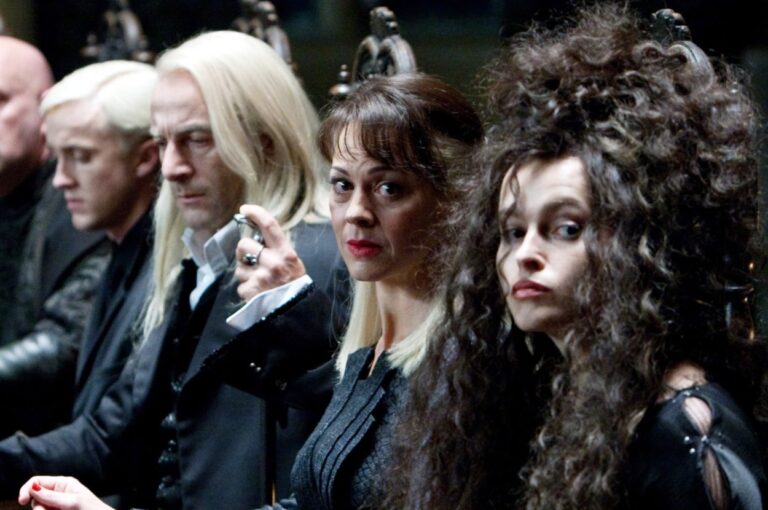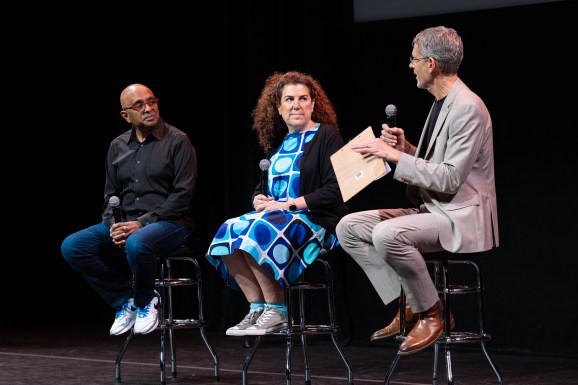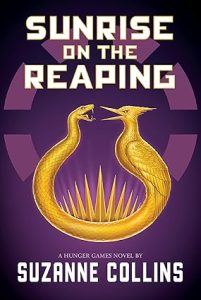
As we look forward to the release of Sunrise on the Reaping, this is a great time to reflect on a fascinating, under- rated character of the original trilogy, as well as to ponder the role of cats, not just in The Hunger Games trilogy and its prequels, but throughout speculative fiction, from Hogwarts to outer space. We’ll also consider why it’s the lovable idiot, the orange cat, who so often saves the day and why, as we get close to our next visit to Panem, feline plot threads may be out there, just waiting for a clever paw to grasp them.
rated character of the original trilogy, as well as to ponder the role of cats, not just in The Hunger Games trilogy and its prequels, but throughout speculative fiction, from Hogwarts to outer space. We’ll also consider why it’s the lovable idiot, the orange cat, who so often saves the day and why, as we get close to our next visit to Panem, feline plot threads may be out there, just waiting for a clever paw to grasp them.
Gingers Whose Heads Have Something Inside Them
Those of us who have orange cats in our households know well that they are not generally the most intelligent members of the feline family. My own dear Father Brown is an affectionate creature (at least with us. He’s terrified of strangers), but, when it comes to good critical thinking skills, the other two cats, Miss Fisher and Sam Spade, are far superior. Just googling videos of orange cates will yield a host of photographic evidence that gingers of all shades, particularly males, are justifiably legendary for their bad decision making. Most cat lovers will attest that, if we want to cast a cat mastermind, the best choice would be a calico. The genetic oddity that makes calicos is limited to females (if you really do have a male calico, alert the media, and move away from the neighborhood next to the nuclear waste dump). Females of all cat species tend to be intelligent. Lionesses, for example, are the ones who do the hunting in prides (as Scar whines in The Lion King when supper is late). Male cats tend to be the brawn, and the females are the brain. Orange toms are also often quite handsome, and know it, hence the Rum-Tum-Tugger’s excessive self-confidence in Cats. Yet, in looking at the cats who appear in speculative fiction, we see a host of male ginger cats, who are both surprisingly intelligent and remarkably durable. Let’s visit a few of them.
British Literature Kitties: Cheshire , Ginger, and Crookshanks
Perhaps one of the most peculiar cats in classic literature is Lewis Carroll’s Cheshire Cat in Alice’s Adventures in Wonderland. Most of us probably imagine that cat with Disney’s animated or CGI one in mind, thus, we picture a purple, blue, or other extravagantly colored feline, but the cat Carroll originally describes in the Duchess’s kitchen is extraordinary not for its color, but only for its grin, a feature the Duchess attributes to all cats but particularly Cheshire ones. In fact, in the original Tenniel illustrations for Alice, the Cheshire Cat is tinted orange. While he claims to be mad (like so many of the creatures Alice meets), he is actually quite insightful and, of course, possesses the startling ability to vanish at will, either all at once, or grin last.
Wonderland. Most of us probably imagine that cat with Disney’s animated or CGI one in mind, thus, we picture a purple, blue, or other extravagantly colored feline, but the cat Carroll originally describes in the Duchess’s kitchen is extraordinary not for its color, but only for its grin, a feature the Duchess attributes to all cats but particularly Cheshire ones. In fact, in the original Tenniel illustrations for Alice, the Cheshire Cat is tinted orange. While he claims to be mad (like so many of the creatures Alice meets), he is actually quite insightful and, of course, possesses the startling ability to vanish at will, either all at once, or grin last.
An equally intelligent but less positive orange cat appears in C.S. Lewis’s The Last Battle. Lewis was a great animal lover, with both cats and dogs in his household at various times, including an old Tom who ate fish as a “pensioner” because he was no longer the mouser he was in his youth. Yet, in the final Narnia book, Lewis casts a ginger tom as one of the principal villains who engineers the disastrous Tashlan plot, colludes with the Calormenes, and ultimately helps bring about the end of Narnia. Although he is wicked, Ginger is smart, moving into position to control the Narnians as the original mastermind, Shift the Ape, becomes too drunk to do so. His ultimate punishment, being turned from an intelligent, Talking Cat to an ordinary tomcat is both a reminder of the dangers of intellectual pride and an example of how those who are extraordinary should use their gifts for good, or risk losing them.
 Just as intelligent, but extraordinary in other ways, is the much more positive Crookshanks. Although not technically a cat, as he is part Kneazle, Hermione’s cat is certainly more than meets the eye. He appears, in the magical menagerie, as just a big grumpy orange cat with a squashed face and bandy legs. Hermione takes him partly out of pity, but he quickly becomes a source of strife with the other lovable, goofy ginger who needs Hermione: Ron. Since only Crookshanks realizes the true identity of Scabbers, Ron’s rat, he tries to protect the children and communicates with Sirius, whose true nature he also understands.
Just as intelligent, but extraordinary in other ways, is the much more positive Crookshanks. Although not technically a cat, as he is part Kneazle, Hermione’s cat is certainly more than meets the eye. He appears, in the magical menagerie, as just a big grumpy orange cat with a squashed face and bandy legs. Hermione takes him partly out of pity, but he quickly becomes a source of strife with the other lovable, goofy ginger who needs Hermione: Ron. Since only Crookshanks realizes the true identity of Scabbers, Ron’s rat, he tries to protect the children and communicates with Sirius, whose true nature he also understands.
Cats in Space: Jones, Orion, Spot, and Goose
Far above the British Isles, the clever orange cat is a fixture in science fiction films. Defying the tendancy of actual orange cats to get injured in peculiar ways, these hardy survivors demonstrate both brains and resilience.
When the majority of the human crew of the Nostromo falls prey to the xenomorph in Alien, only Jones, the ship’s orange cat, survives to accompany lone human survivor Ripley in hypersleep. Since Ripley awakes decades later to a world in which everyone she knew is dead, Jones is also both long-lived and supportive. He’s also super smart, knowing when the xenomorph is around and hissing angrily. Although it can be argued that Jonesy is complicit in the death of one of his crewmembers, Brett, who gets nabbed by the Alien while chasing the cat, he is a great comfort to Ripley, who is so fond of him that she doesn’t take him with her in Aliens, so he will be safe.
orange cat, survives to accompany lone human survivor Ripley in hypersleep. Since Ripley awakes decades later to a world in which everyone she knew is dead, Jones is also both long-lived and supportive. He’s also super smart, knowing when the xenomorph is around and hissing angrily. Although it can be argued that Jonesy is complicit in the death of one of his crewmembers, Brett, who gets nabbed by the Alien while chasing the cat, he is a great comfort to Ripley, who is so fond of him that she doesn’t take him with her in Aliens, so he will be safe.
Another orange tomcat who has unpleasant run-ins with aliens is Orion from Men in Black. Orion’s collar is adorned with a bauble that actually holds the galaxy that Agents K and J are seeking to protect from the nasty Bug that comes to earth. Although his owner is killed, Orion protects the galaxy and tries to get it to the agents who, it seems, are not as smart as he is; they don’t realize that they are looking for something on “Orion’s collar” not “Orion’s belt.” In typical cat fashion, survivor Orion gets away from the Bug more than once and survives the movie as well as the alien.
Although most of the space orange cats are male, there are a couple of notable, if unconventional females. On Star Trek: The Next Generation, both the series and later films, Commander Data’s cat, Spot, made a number of appearances, and even outlived her owner (at least one version of him). While a variety of cats played Spot,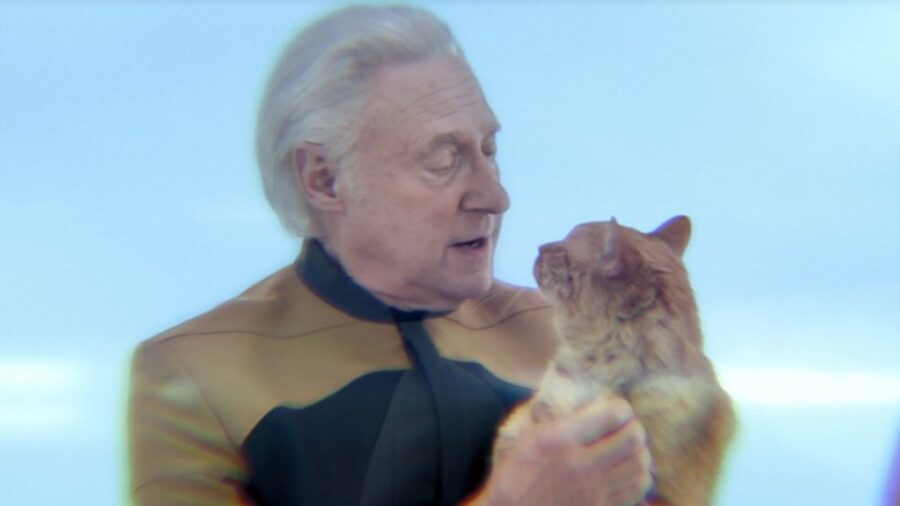 eventually, the cat was always orange (without any spots. Data just picked a popular pet name at random). Although Spot was called “he” early on, later, the show required Spot to have kittens, so the cat was ret-conned as female. Whether male or female, Spot is clever and durable, surviving a number of harrowing adventures on the series and the crash of the Enterprise D in Star Trek: Generations. Memories of Spot are among the resurrected Data’s most treasured memories in Picard.
eventually, the cat was always orange (without any spots. Data just picked a popular pet name at random). Although Spot was called “he” early on, later, the show required Spot to have kittens, so the cat was ret-conned as female. Whether male or female, Spot is clever and durable, surviving a number of harrowing adventures on the series and the crash of the Enterprise D in Star Trek: Generations. Memories of Spot are among the resurrected Data’s most treasured memories in Picard.
Generally female, but not actually a cat, Goose, in the Captain Marvel MCU films (the cat’s name is Chewie in the comics. Both pop culture references work well for the cat of pilot Captain Marvel/Carol Danvers), is also an orange feline who is more than meets the eye. Named after the Top Gun character, fighter pilot-ride-along Goose is actually a Flerken, a strange, tentacled creature with a pocket universe stomach that can grab, swallow, and regurgitate (or eat) much larger beings. Her kittens also help in time of need. Goose has a mixed resume, which includes saving people and Infinity Stones, but also giving Nick Fury the injury behind his iconic eye patch. Loyal sidekick and comic relief, Goose is a beloved, and undeniably clever, character.
eat) much larger beings. Her kittens also help in time of need. Goose has a mixed resume, which includes saving people and Infinity Stones, but also giving Nick Fury the injury behind his iconic eye patch. Loyal sidekick and comic relief, Goose is a beloved, and undeniably clever, character.
Panem’s Felines: Buttercup and Beyond
There is no question that cats create a theme woven through The Hunger Games Trilogy. Katniss Everdeen, with her nickname of “Catnip” given by Gale Hawthorne when he initially did not understand her, is certainly a feline character in a variety of ways, from her somewhat standoffish personality to her survivor status that almost seems like she has nine lives. Buttercup, though, is a cat character who both continues the tradition of clever speculative fiction ginger toms and serves a vital role in the original trilogy. So important is Buttercup to the overall story arc that fans complained bitterly over the use of a black and white cat for a “thowaway” moment in the first film. Buttercup was re-cast so that his important role in the books could at least be somewhat saluted in the films.
 From a wormy, flea-bitten kitten that Katniss wants to drown but spares due to Prim’s pleading, Buttercup becomes a profoundly interesting character. His resilience echoes Katniss’s own, as he survives the bombing of 12 and walks all the way home from 13. Like Katniss, he is bereft by the loss of Prim, and together, they work to cope in a world without her. Katniss realizes that she and Buttercup are similar, but readers may catch on before Katniss does. Like Buttercup, Katniss is tough but also in need of love and companionship. They are both smart but damaged individuals who do not trust easily and who come back from repeated near-death experiences. The love of Prim elevates the scruffy yellow kitten to “Buttercup” and gives Katniss a lifeline. Without Prim, they hang on to one another.
From a wormy, flea-bitten kitten that Katniss wants to drown but spares due to Prim’s pleading, Buttercup becomes a profoundly interesting character. His resilience echoes Katniss’s own, as he survives the bombing of 12 and walks all the way home from 13. Like Katniss, he is bereft by the loss of Prim, and together, they work to cope in a world without her. Katniss realizes that she and Buttercup are similar, but readers may catch on before Katniss does. Like Buttercup, Katniss is tough but also in need of love and companionship. They are both smart but damaged individuals who do not trust easily and who come back from repeated near-death experiences. The love of Prim elevates the scruffy yellow kitten to “Buttercup” and gives Katniss a lifeline. Without Prim, they hang on to one another.
Since Sunrise on the Reaping will take place decades before the events of the Hunger Games trilogy, Buttercup will not be making an appearance, although it is possible an ancestor might. After all, Prim’s goat Lady might very well be a descendant of the Covey’s Shamus seen in The Ballad of Songbirds and Snakes. Other cat characters have already made appearances in the prequel. One of these, of course, is not actually a cat. Tigris, who appeared in Mockingjay as an overly altered, has-been stylist on skid row, is, over sixty-five years earlier in Ballad, Coriolanus Snow’s affectionate young cousin, doing whatever it takes to help him survive and succeed. By the time of Mockingjay, she has so altered her appearance that she literally appears to be feline, but her habit of eating raw meat, like a cat, is one that is established as early as Ballad. Coryo knows she eats most of her hamburger patty while she is cooking dinner, as she prefers it raw. In Sunrise, perhaps we will see how Tigris has evolved from the skinny but fashion-conscious protector of young Coryo and see how she will become the dehumanized creature who hates Snow so much she hides his would-be assassins and aids them in their efforts to bring him down.
affectionate young cousin, doing whatever it takes to help him survive and succeed. By the time of Mockingjay, she has so altered her appearance that she literally appears to be feline, but her habit of eating raw meat, like a cat, is one that is established as early as Ballad. Coryo knows she eats most of her hamburger patty while she is cooking dinner, as she prefers it raw. In Sunrise, perhaps we will see how Tigris has evolved from the skinny but fashion-conscious protector of young Coryo and see how she will become the dehumanized creature who hates Snow so much she hides his would-be assassins and aids them in their efforts to bring him down.
The other cat from Ballad whose role bears mention is not an orange one or necessarily very clever, and that may just be the point. Young Coriolanus Snow, visiting the shuttered nightclub of Pluribus Bell, enjoys visiting with Boa Bell, the fluffy white cat, and thinks of her when Dr. Gaul asks him and his classmates if they have pets. He recalls how much the cat liked him, purring at the sight of him, a reaction later confirmed when Coriolanus visits the club to borrow a guitar for Lucy Gray Baird to play in her interview before the Games begin. As soon as he arrives, “Boa Bell wove between Coriolanus’s legs, purring like an engine” (164). It is unlikely that the cat will appear in Sunrise, set forty years later, as she is described as already old, seventeen. But we may learn what became of her. Young Snow’s affection for this cat may seem inconsequential, but Collins often pulls out such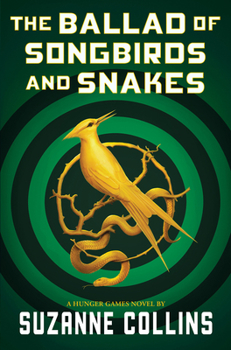 inconsequential pieces later, revealing them to have much more power than originally seen. Will President Snow have a similar cat? It might make him a bit too “Doctor Evil” and thus too obvious. Yet, the fact that, as a child, he was fond of this cat, so different from Buttercup, is telling. Boa Bell is clean, white like his favorite kind of rose, and likes him. Buttercup, scruffy, scrappy, and fond of just Prim, could not be more different. Boa Bell does not appear particularly bright, just pretty, demonstrating the kind of value Snow, like the Capitol, places on people as well as creatures. Appearances are highly valued in the Capitol, so much so that the shabby Tributes are dolled up before being sent to kill one another; but, as we will no doubt see in Sunrise, the Gamemakers don’t like their Tributes to get too clever. Just as Katniss’s trick with the berries shows her wits pitted against those of her captors, we know that this book will include young Haymitch Abernathy using the very arena, the forcefield wall, as a weapon. We also know, from what he tells Katniss over twenty years later, that he, and everyone he loved, was punished for his cleverness. Snow’s affection for a pet that is decorative, rather than clever, may also see parallels in the arena of the Fiftieth Hunger Games, which we know will be pretty, but dangerous. I can’t help but wonder if we will learn that Boa Bell met a terrible fate after scratching Snow or simply snubbing him at some point. Unlike Nick Fury, who just accepts his injury at the claws of Goose, Snow would be more apt to punish when the thing of beauty turned on him. Time will tell.
inconsequential pieces later, revealing them to have much more power than originally seen. Will President Snow have a similar cat? It might make him a bit too “Doctor Evil” and thus too obvious. Yet, the fact that, as a child, he was fond of this cat, so different from Buttercup, is telling. Boa Bell is clean, white like his favorite kind of rose, and likes him. Buttercup, scruffy, scrappy, and fond of just Prim, could not be more different. Boa Bell does not appear particularly bright, just pretty, demonstrating the kind of value Snow, like the Capitol, places on people as well as creatures. Appearances are highly valued in the Capitol, so much so that the shabby Tributes are dolled up before being sent to kill one another; but, as we will no doubt see in Sunrise, the Gamemakers don’t like their Tributes to get too clever. Just as Katniss’s trick with the berries shows her wits pitted against those of her captors, we know that this book will include young Haymitch Abernathy using the very arena, the forcefield wall, as a weapon. We also know, from what he tells Katniss over twenty years later, that he, and everyone he loved, was punished for his cleverness. Snow’s affection for a pet that is decorative, rather than clever, may also see parallels in the arena of the Fiftieth Hunger Games, which we know will be pretty, but dangerous. I can’t help but wonder if we will learn that Boa Bell met a terrible fate after scratching Snow or simply snubbing him at some point. Unlike Nick Fury, who just accepts his injury at the claws of Goose, Snow would be more apt to punish when the thing of beauty turned on him. Time will tell.
As we await Sunrise, it is entirely possible that the cat motif will not have much play in this installment, but then, like the existence of a plethora of clever orange tomcats, the entire world of speculative fiction is all about defying our expectations.
Father Brown, for whom books are just nice chin rests



